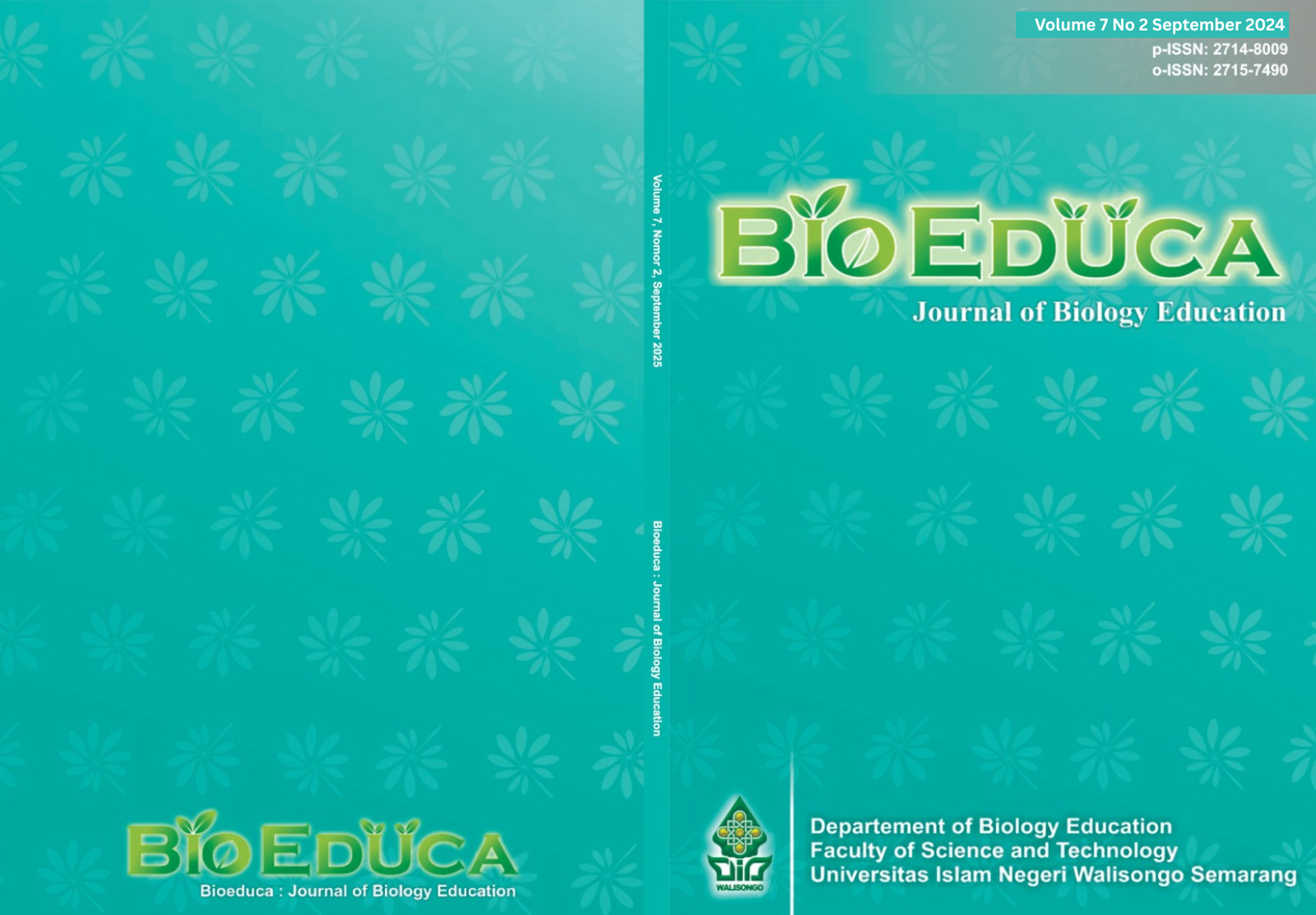Improving Students' Learning Motivation Through Differentiation Learning Based on Cooperative Learning
Main Article Content
Abstract
In the 21st century, education focuses on maximizing students' potential to face current global challenges. Therefore, appropriate learning strategies, including differentiated instruction, are needed to meet these demands. This study aims to determine the increase in students' motivation to learn biology after implementing differentiated instruction. This study is a classroom action research. The subjects of this research are 36 eleventh-grade students. The object of this research is the student's motivation to learn biology after participating in differentiated instruction based on Cooperative Learning. The questionnaire is the data collection method used to gather information on students' motivation to learn biology. The data analysis technique used in this classroom action research is descriptive quantitative analysis. The study's results proved an increase in learning motivation, as indicated by the questionnaire analysis results showing 82.14% in the first cycle and 86.57% in the second. Thus, these results indicate that the implementation of differentiated instruction based on Cooperative Learning can increase the learning motivation of eleventh-grade students at SMA N 4 Semarang in the coordination system material
Downloads
Article Details

This work is licensed under a Creative Commons Attribution-ShareAlike 4.0 International License.
The copyright of the received article shall be assigned to the journal as the publisher of the journal. The intended copyright includes the right to publish the article in various forms (including reprints). The journal maintains the publishing rights to the published articles. Authors are allowed to use their articles for any legal purposes deemed necessary without written permission from the journal with an acknowledgment of initial publication to this journal.

This work is licensed under a Creative Commons Attribution-ShareAlike 4.0 International License.
References
Anlitra, R (2021). Pelmbellajaranl Koopelratif Tipel Jigsaw dalam Pelmbellajaranl Matelmatika di Selkolah Dasar. JPDI (Jurnlal Pelnldidikanl Dasar Inldonlelsia), 6(1),8
ELmda, Anlnla. (2017). Keldudukanl Motivasi Bellajar Siswa dalam Pelmbellajaranl. Lanltanlida Journlal, Vol. 5 NLo. 2 (2017) 93-196 Fitrianli, Melllu. (2017). Pelnlgaruh Modell Problelm Baseld Lelarnlinlg telrhadap Motivasi Bellajar Sistelm Koordinlasi pada Siswa di SMA NLelgelri 2 Banltaelnlg. Jurnlal Biotelk 5, p. 228-239. 43
Fittrianli, Melllu. (2017). Pelnlgaruh Modell Problelm Baseld Lelarnlinlg Telrhadap Motivasi Bellajar Sistelm Koordinlasi Pada Siswa di SMA NLelgelri 2 Banltaelnlg. Jurnlal Biotelk 5, p. 228-239.
Hazmiwati, H. (2018). Pelnlelrapanl Modell Pelmbellajaranl Koopelratif Tipel STAD Unltuk Melnlinlgkatkanl Hasil Bellajar IPA Siswa Kellas II Selkolah Dasar. Jurnlal Pelnldidikanl Guru Selkolah Dasar, 7(1), 178.
Helrzonl, H. H., Budijanlto, & Utomo, D. H. (2018). Pelnlgaruh Problelm-Baseld Lelarnlinlg (PBL) telrhadap Keltelrampilanl Belrpikir Kritis. Jurnlal Pelnldidikanl: Telori, Pelnlellitianl, Danl Pelnlgelmbanlganl, 3(1), 42–46.
Khodijah, NL. (2014). Psikologi Pelnldiidkanl. Jakarta: Rajawali Pelrs.
Marlinla. 2020. “Stratelgi Pelmbellajaranl Belrdifelrelnlsiasi di Selkolah Inlklusif.” Padanlg: Afifa Utama.
Purwanlto, NLgalim. (2013). Prinlsip-Prinlsip danl Telknlik ELvaluasi Pelnlgajaranl. Banldunlg: PT Relmaja
Rosdakarya Ramlawati, Sitti R. Y & Aunlillah, I. (2017). Pelnlgaruh Modell PBL (Problelm Baseld Lelarnlinlg) telrhadap Motivasi danl Hasil Bellajar IPA Pelselrta Didik. Jurnlal Sainlsmat, p. 1-14. Sulistyanli, dkk. (2020). Pelnlgaruh Gaya Bellajar telrhadap Pelmbellajaranl Siswa Selkolah Dasar. Celrdika: Jurnlal Ilmiah Inldonlelsia, Felbruari 2020, 1 (2), 157-163.
Rusmanl. (2013). Modell-modell pelmbellajaranl. PT Raja Grafinldo Pelrsada.
Ulfa, M., & Saifuddinl. (2018). Telrampil Melmilih Danl Melnlggunlakanl Meltodel Pelmbellajaranl. SUHUF, 1,35-56.
Widyoko, S.EL.P. (2015). Telknlik Pelnlyusunlanl Inlstrumelnl Pelnlellitianl. Yogyakarta: Pustaka Pellajar.

